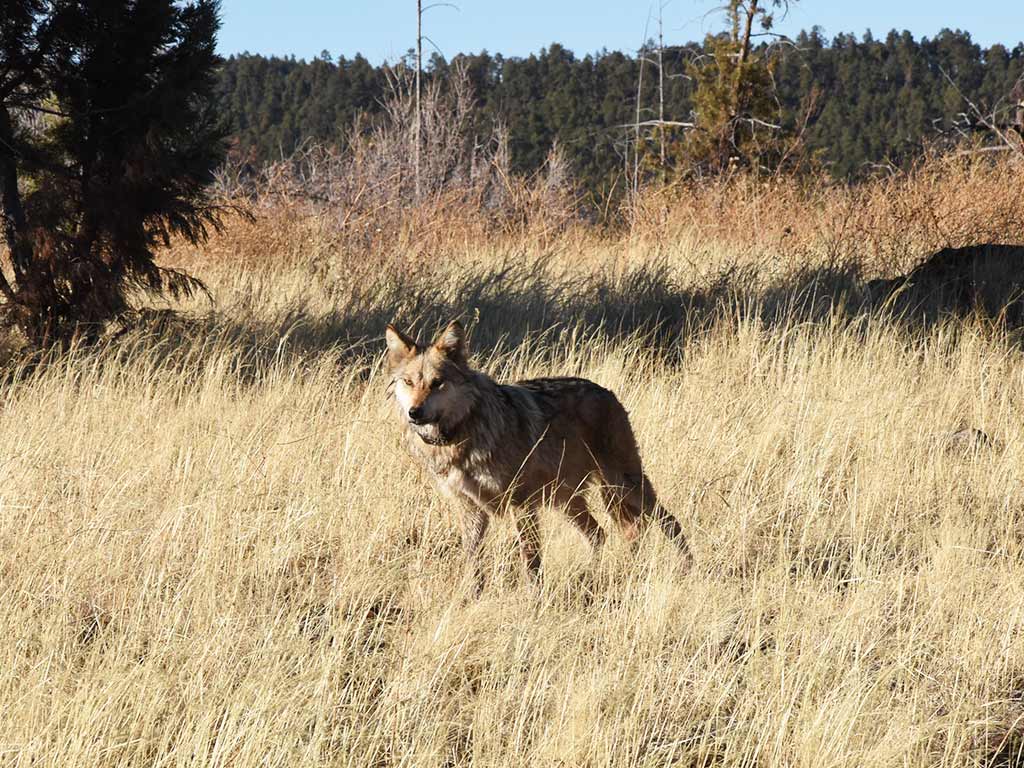Late last week, as I was deep in the weeds of Colorado wolf restoration, my phone started blowing up with an unlikely image: the logo of the New Mexico Cattle Growers Association. The livestock lobby group–antagonistic to native wildlife and public lands–had tweeted about a Mexican wolf near Moriarty, New Mexico. And friends, family, biologists, lawmakers, and colleagues had noticed. The texts ranged from jubilation to dread–this was a big deal.
I and other wolf advocates had known this wolf, now named Asha, was roaming for a while. She had spent some time off the radar near Laguna Pueblo, and her whereabouts had already created a bit of buzz. But this northeastern push is unprecedented. Since Mexican wolves were reintroduced in 1998, no lobo had been known to travel this far east.
Mexican wolves have roamed north before (and increasingly do), but the more notable journeys of late have occurred in Arizona, not New Mexico. [Last year, a wolf called Anubis caught the public imagination after he twice traveled up to Flagstaff, AZ before sadly being shot and killed.] A wolf heading into the Sangre de Cristo Mountains hasn’t been documented for many decades.
So what does this mean? And what do we do?
First, we should celebrate. This is an important moment for Mexican wolf recovery. And for all the fits and starts of that program, for all the disappointing policies that federal and state agencies have set for lobos, a Mexican wolf roaming free outside of the Greater Gila into the Southern Rocky Mountains is one of the important steps for wolf restoration. It is a sign that–despite the roadblocks–Mexican wolf recovery is slowly, slowly progressing.
Then, we should fret a little bit. There is real trepidation whenever a wolf roams. These animals are frequently killed out of ignorance, fear, and hatred (or mistaken identity). And crossing an interstate is no small matter either. But as Emily Renn of the Grand Canyon Wolf Recovery Project eloquently said about Anubis, “there’s always a risk of caring about a wild animal. We just have to keep doing that.”
But most importantly, we should do what we do best: act. Mexican wolves that travel north of Interstate 40 are often captured and sent back to the Gila. As Senator Heinrich poignantly notes, it is a purely political policy that upholds an arbitrary boundary advocated for by anti-wolf state governments in 2015. We are trying to fix it. But in the meantime, we need you ACT.
Tell the U.S. Fish and Wildlife Service and the New Mexico Department of Game and Fish to let Asha roam free and find what she is looking for.
